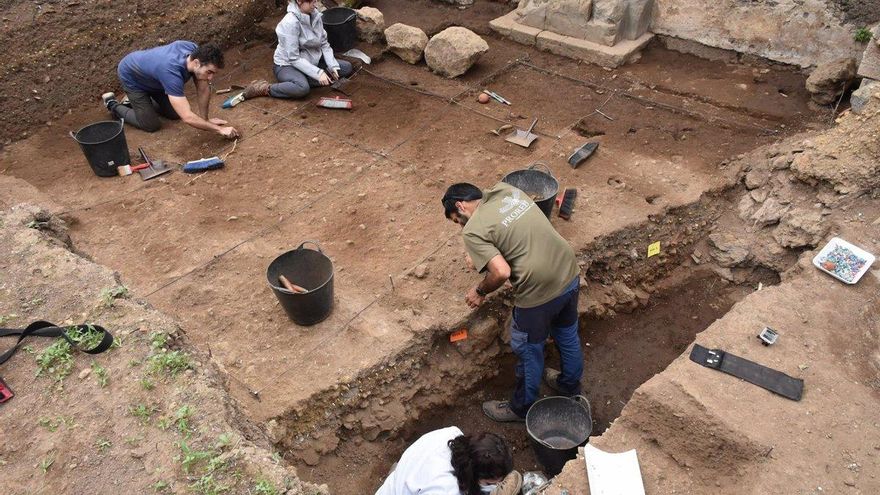
The General Directorate of Culture and Cultural Heritage, in partnership with La Orotava City Council, supports a third archaeological dig near the Church of San Francisco, aiming to uncover the history of the former Franciscan convent of San Lorenzo which has culminated in the discovery of eight individuals in various graves associated with interments made at this sacred site prior to the 1801 fire that devastated a significant portion of the building.
The excavation work has enabled the documentation of burials and previously unseen everyday items that uncover new insights into the operation and development of the initial monastic establishment of the Villa de La Orotava.
These discoveries, dated between the late 17th century and the early 18th century, support the theory that “the interiors of such ecclesiastical spaces were utilised as burial sites,” as stated by the PRORED team, which has been managing this project since 2021.
In addition to these discoveries, conservation efforts have been undertaken on the architectural features linked to this ancient convent founded in 1519, including a stone arch and a column with a Corinthian-style capital.
The positioning of these features “affirms earlier assertions that the area in question was part of an interior nave within the structure,” noted the work team, who stress the importance of restoring these wall structures for their preservation and future enhancement.
For the general director of Culture and Cultural Heritage, Miguel Ángel Clavijo, this research is essential “to explore the history of what Viera y Clavijo termed El Escorial de Canarias, a chapter of history that has remained concealed and merits recovery due to its impact on La Orotava’s future and the entire archipelago.”
Meanwhile, the mayor of La Orotava, Francisco Linares, appreciates that these archaeological endeavours are taking place in the municipality as they allow for the “uncovering” of aspects of local history and promoting cultural values.
He elaborated in a statement, “with these efforts, history is preserved, enabling us to gain deeper insights into our ancestors and their lifestyles, continuing with these excavations to further investigate the memory of this location.”
Preliminary Findings
In relation to the anthropological analysis of the skeletal remains, of the eight individuals identified, three are adults and five are minors.
This discovery is significant as it reveals that the convent “was employed for the burial of individuals of various ages, including the reuse of adult graves for the interment of children, a customary funerary practice of the period,” as the archaeologists have concluded.
Additionally, items pertaining to the clothing, daily activities, and furnishings of the people linked to this site have been unearthed, including a coin, a pin, several buttons, and a pipe, among other artefacts from the Old Regime.
Moreover, the excavation has facilitated the identification of a stratigraphic layer featuring other architectural components such as stone blocks and brick fragments, which are remnants of the original structures of this significant convent.
Notwithstanding the impacts of bioturbation and erosion, the units remain in a “relatively good” condition, according to the research team.
These structural components, alongside the human remains discovered, yield crucial information regarding the organisation of the convent and the burial practices undertaken there.
Further analysis of the artefacts will proceed in subsequent phases of the campaign, as will the implementation of restoration and conservation initiatives.















